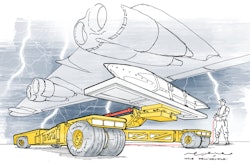
Electrification remains the most significant societal transition today, affecting virtually every industry. This is especially true as governments attempt to mitigate the effects of climate change and original equipment manufacturers (OEMs) and fleet operators adapt to changing markets and technologies. With agriculture’s electrification now underway, the industry is following multiple drivers and developments emerging in the past two decades. Government regulations, operational efficiency, greater telematics data availability, lithium battery and charging technology advancements and more substantially contribute to electrification’s progress.
What’s Driving Electrification?
Environmental and health regulations prove to be the most prominent drivers behind the electrification of the agriculture industry. OEMs and fleet operators should expect emissions requirements to become more demanding, such as:
- US Tier IV (approaching Tier V in 2024, with full implementation in 2028)
- Euro 6 (with Euro 7 aiming to be implemented in 2025)
- China VI standards (which are split into VI-a and VI-b)
The increased emissions requirements for agriculture are a result of governments worldwide facing challenges in meeting or sustaining their emissions reduction targets, as originally outlined in climate pledges. Consequently, they are experiencing heightened pressure to address the severe impacts of climate change.
With the electrification of on-road vehicles moving forward under its own momentum, the next target is small and midsized nonroad mobile machinery (NRMM). Bans are increasing for small off-road engines (SORES) for new outdoor power equipment, as seen in California and elsewhere. And agricultural machines won’t be ignored, with the industry contributing an estimated 33% of global greenhouse gasses (GHG) annually.
Moreover, government agencies like the Canadian Centre for Occupational Health and Safety (CCOHS) and the International Agency for Research on Cancer (IARC) recognize gas and diesel emissions’ short- and long-term health hazards (e.g., respiratory issues, carcinogens found in diesel exhaust’s particulate matter).
Similarly, academic research has shown crop health and yields suffer from exposure to internal combustion engines (ICE) emissions. These occupational, environmental and public health concerns will only lead to hastened implementation of those more rigorous requirements.
And given the current agriculture labor shortage, with 40% of new industry jobs remaining open, increased sick days and workers looking for jobs in industries with fewer risks could be devastating for many farms.
Preparation Alongside Reduction
Apart from implementing more stringent regulations to combat climate change, governments understand that they must prepare for an electrified future. Electric drive is currently the leading alternative energy platform that will replace most ICE, but achieving that transition requires enormous investments. Electrification necessitates accessible charging infrastructure, power grid resilience and similar large-scale investments.
For example, the US made $24.5 billion available for EV charging, supply chain resiliency and clean transportation, and California’s CORE program provides funding to accelerate companies’ adoption of electric NRMM.
While government regulations and investment are powerful catalysts for electrification, the innovation and adoption of electric drive go beyond these drivers. Electric drive enables transformative societal shifts, offering numerous merits, particularly by providing farm operators and the agricultural industry with cost savings and enhanced efficiency.
Electric drive offers farm operators and the agricultural industry significant advantages over ICE, leading to newfound efficiencies at both the vehicle and business levels and driving the transition toward electrification.
Low Maintenance & Efficiency
One key benefit of battery-operated agricultural machinery is the reduced need for regular maintenance, such as replacing engine oil or fuel filters regularly. Electric vehicles have a simpler design with fewer moving parts, leading to fewer opportunities for operational issues caused by factors like extreme temperatures and friction (which can affect ICE). As a result, unexpected repairs become less likely, and maintenance tasks are less frequent.
The only maintenance required for electric drive agricultural machinery is regular charging. Additionally, electric vehicles eliminate idling and warm-up periods, ensuring that they never waste energy expenses.
Cost Stability of Electricity
Electricity is a more stable and long-term option for agriculture compared to fossil fuels, as its cost structure is less dependent on geopolitical implications. This was highlighted during the Russia-Ukraine war, where oil prices fluctuated significantly, resulting in a 42% rise in consumer gas prices within four months in the US and a tenfold increase in Europe. Since then, fossil fuel prices have remained unstable.
In an industry that depends on reliable energy sources, agriculture has the potential to use electricity and alternative energy generation to counterbalance these price fluctuations. Consider, for example, agriculture’s abundance of land. This provides large-scale operations with the ability to accommodate alternative energy generation at a massive scale. Solar photovoltaic (PV) panels and wind sources naturally produce energy, leading to self-sustaining energy consumption and more predictable, stable operational costs.
Battery & Charger Advancements
Recent innovations in battery, charger and related technologies have made electric drive equipment viable.
Lithium batteries, in particular, have made a significant impact due to their introduction, cost reduction and availability. Before lithium batteries, fast charging was not possible, which was a major obstacle in electrifying agriculture’s day-long usage of machines in the field. Today’s lithium batteries provide the necessary power output, density, durability and longevity to help electric drive platforms reach the performance levels farmers need.
Nonetheless, a battery is only as good as the charger that keeps it operating efficiently.
Chargers can now be mounted on-board to reduce storage requirements and enable opportunity charging from portable power sources or solar installations. The introduction of more sophisticated charging systems that regulate battery charging is the most important advancement. These systems monitor voltage, usage consistency, poor charging practices, equipment failure flags and more.
With today’s battery and charging capability and insight, fleet managers can optimize operations and resource allocations based on vehicle and energy usage better than ever before.
Agriculture’s Electrified Future
Regulations and health concerns are the driving forces behind agriculture’s electrification, but investment and technology advancements are equally important. While agricultural machines and equipment were not capable of being electrified in the past, with recent innovations, electric agricultural equipment is now a viable option.
Electric drive is becoming increasingly competitive with internal combustion engines, and forthcoming regulations and societal adoption will only widen the gap in electrification’s favor. The last challenges professionals are now solving involve developing charging infrastructure and batteries capable of powering large agricultural machines.
However, with advancements in these areas and better data utilization, the possibilities for electrification are endless, including the potential for autonomous agricultural machinery.
___________________________________________________________________________________________
Rod Dayrit is director of business development at Delta-Q Technologies.



















